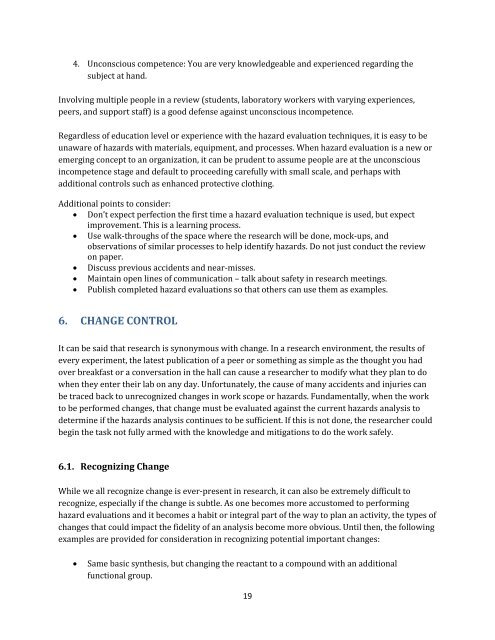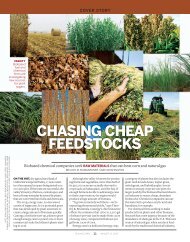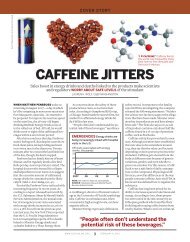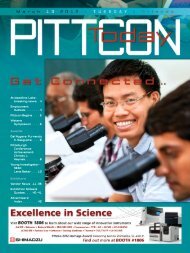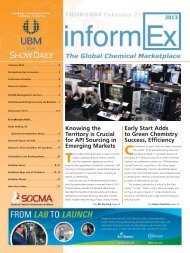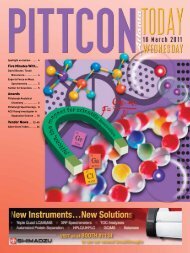Identifying and Evaluating Hazards in Research Laboratories
Identifying and Evaluating Hazards in Research Laboratories
Identifying and Evaluating Hazards in Research Laboratories
Create successful ePaper yourself
Turn your PDF publications into a flip-book with our unique Google optimized e-Paper software.
4. Unconscious competence: You are very knowledgeable <strong>and</strong> experienced regard<strong>in</strong>g thesubject at h<strong>and</strong>.Involv<strong>in</strong>g multiple people <strong>in</strong> a review (students, laboratory workers with vary<strong>in</strong>g experiences,peers, <strong>and</strong> support staff) is a good defense aga<strong>in</strong>st unconscious <strong>in</strong>competence.Regardless of education level or experience with the hazard evaluation techniques, it is easy to beunaware of hazards with materials, equipment, <strong>and</strong> processes. When hazard evaluation is a new oremerg<strong>in</strong>g concept to an organization, it can be prudent to assume people are at the unconscious<strong>in</strong>competence stage <strong>and</strong> default to proceed<strong>in</strong>g carefully with small scale, <strong>and</strong> perhaps withadditional controls such as enhanced protective cloth<strong>in</strong>g.Additional po<strong>in</strong>ts to consider:• Don’t expect perfection the first time a hazard evaluation technique is used, but expectimprovement. This is a learn<strong>in</strong>g process.• Use walk-throughs of the space where the research will be done, mock-ups, <strong>and</strong>observations of similar processes to help identify hazards. Do not just conduct the reviewon paper.• Discuss previous accidents <strong>and</strong> near-misses.• Ma<strong>in</strong>ta<strong>in</strong> open l<strong>in</strong>es of communication – talk about safety <strong>in</strong> research meet<strong>in</strong>gs.• Publish completed hazard evaluations so that others can use them as examples.6. CHANGE CONTROLIt can be said that research is synonymous with change. In a research environment, the results ofevery experiment, the latest publication of a peer or someth<strong>in</strong>g as simple as the thought you hadover breakfast or a conversation <strong>in</strong> the hall can cause a researcher to modify what they plan to dowhen they enter their lab on any day. Unfortunately, the cause of many accidents <strong>and</strong> <strong>in</strong>juries canbe traced back to unrecognized changes <strong>in</strong> work scope or hazards. Fundamentally, when the workto be performed changes, that change must be evaluated aga<strong>in</strong>st the current hazards analysis todeterm<strong>in</strong>e if the hazards analysis cont<strong>in</strong>ues to be sufficient. If this is not done, the researcher couldbeg<strong>in</strong> the task not fully armed with the knowledge <strong>and</strong> mitigations to do the work safely.6.1. Recogniz<strong>in</strong>g ChangeWhile we all recognize change is ever-present <strong>in</strong> research, it can also be extremely difficult torecognize, especially if the change is subtle. As one becomes more accustomed to perform<strong>in</strong>ghazard evaluations <strong>and</strong> it becomes a habit or <strong>in</strong>tegral part of the way to plan an activity, the types ofchanges that could impact the fidelity of an analysis become more obvious. Until then, the follow<strong>in</strong>gexamples are provided for consideration <strong>in</strong> recogniz<strong>in</strong>g potential important changes:• Same basic synthesis, but chang<strong>in</strong>g the reactant to a compound with an additionalfunctional group.19


